Warlords Battlecry
The Warlords strategy series goes real-time - can it pull it off? Read our review to find out!
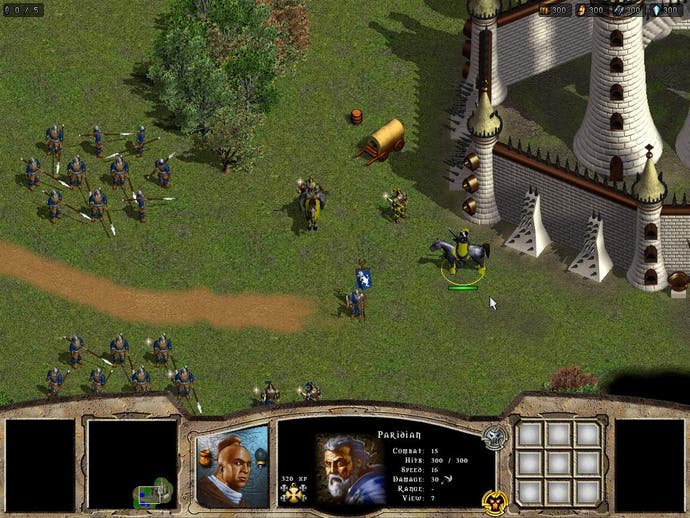
Something Old, Something New
The Warlords series of games have had a relatively successful run, building a loyal following amongst turn based strategy players. Developer SSI have taken the brave step in shifting the games mechanics to a more mainstream real time strategy style for this latest incarnation though, presumably gambling the wrath of the die hard fans against a potentially larger audience.
Warlords Battlecry still keeps to the traditional fantasy theme of its predecessors, and the tools of war here are swords and spells rather than modern day guns and tanks. The battles are represented in the usual top down view, and the current trend for displaying the conflicts in three dimensions has been ignored in favour of an almost retro style of two dimensional backgrounds overlaid with sprites.
Despite this choice the game's visuals are accomplished, represented at an impressive 1024x768 resolution, and the units are very well drawn and (most importantly for the strategy genre) easily distinguishable. There is some great animation for the units too, especially in some of the larger and more exotic characters such as the mounted cavalry units or massive dragons. The pyrotechnics that accompany the spellcasters' attacks are also impressive, and really liven up the screen during a heated battle.
Unfortunately the intricate animations aren't extended to the structures which you create, and these can make the backdrops look flat and static compared to the lively characters that inhabit them.
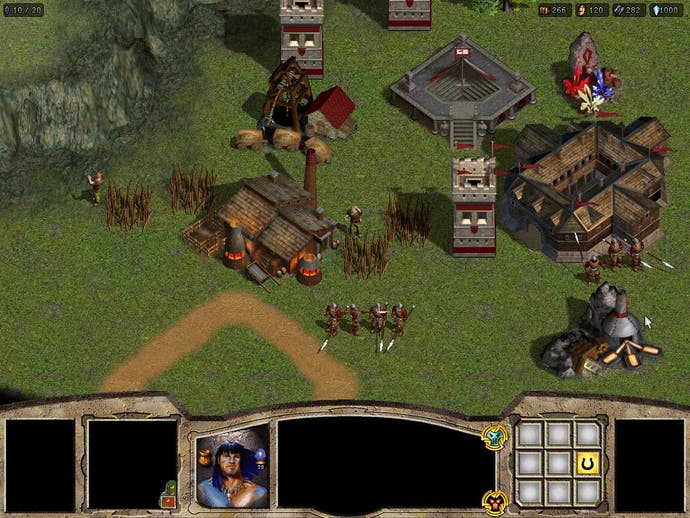
Resourceful
The order of play will be instantly familiar to anyone who has played a real time strategy game which includes resource building, such as the Warcraft series. To create fighting units such as soldiers or cavalry you must build barracks, and each unit or structure requires a combination of the four resource types - in this case gold, metal, crystal and stone.
You obtain these resources from mines scattered around the level. Simply take ownership of one and it will start producing for you automatically, but if you assign men to work on the structure it will produce the resource even faster. Balancing production of four different resource types can be tricky, but the game cleverly provides a market structure which allows the trading of materials, helping you to manage your stocks more efficiently. The actual distribution of resources is handled automatically, which is a welcome relief in an already hectic game.
But with nine playable races, and many different unit types available for each of these races, there is a lot of variety to the combat strategies as you learn the nuances of each different race, especially considering that the weather and even the time of day can be an advantage for some races or a penalty for others. Psychological effects can also greatly influence combat, with certain units inducing different effects on their enemies. Meeting a large dragon, for example, can inflict the terror effect on your men and cause them to flee.
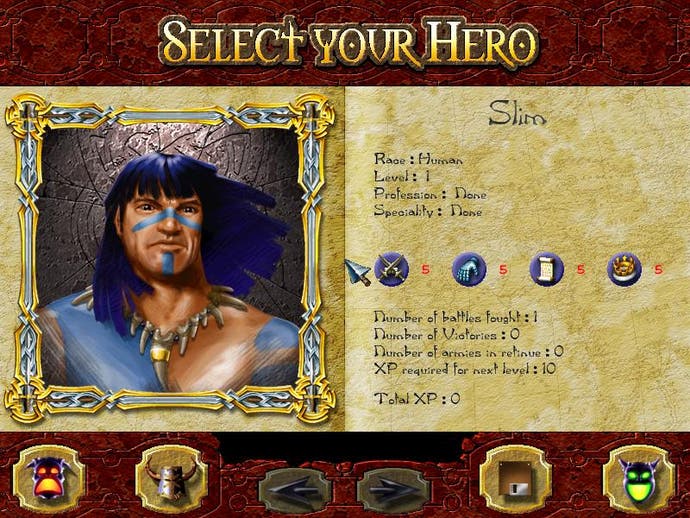
My Hero
Where Battlecry really differs from the norm though is that the most important unit in the game is your hero. He is the primary unit, who can build structures and gives a bonus in combat to all other units inside his influence range. While he does offer this combat bonus, he is such an essential unit that it is often better to leave him protected behind your lines during a skirmish, as his death often means the end of the mission.
The hero character has also got the cunning ability to take control over enemy structures that fall within his command radius. This ability, called convert, is an extremely powerful feature, and if used with some thought can completely sway a battle in your favour. A valid tactic is to storm an enemy installation with your troops, then have the hero follow on behind to convert the buildings to your control while your men keep the enemy busy.
Heroes also bring some role playing elements to the game. After you have completed a certain number of missions you will get the chance to chose a career path for your hero, be it warrior, wizard, rogue or priest. This choice will influence the characters primary statistics from that point on - a warrior will increase in strength, for example, while a wizard will increase intelligence. Later on, after gaining yet more experience, you must chose an ability to specialise in which will again increase the appropriate statistics.
You can also keep some of your other units with you as you progress through the game. These honoured units are added to your retinue, and provided you keep them alive they will develop and grow as you progress though the game. Another role playing element is the introduction of Quests to some levels. These small missions reward your characters with bonus items or abilities in return for completing a small task, adding some welcome variety to the resource building and fighting.
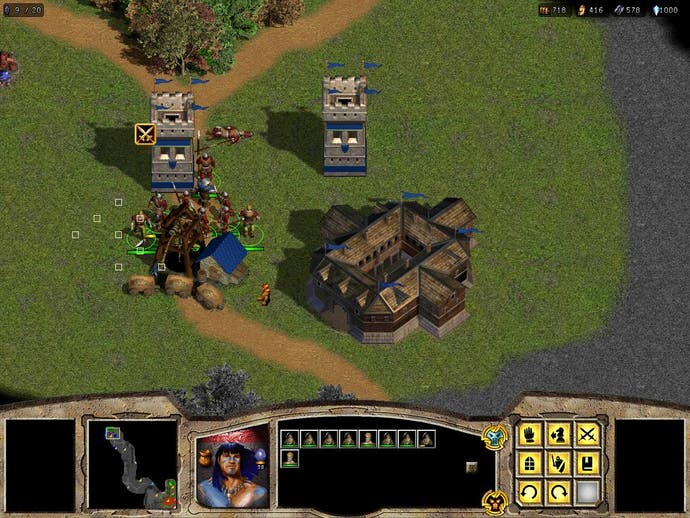
Interface
While most of the game is mouse driven, a number of useful shortcuts have been added for assistance during the frantic play. Commands can be queued by holding down the shift key, and orders can be temporarily ignored with some new urgent orders by holding the alt key.
Your favourite spells can be assigned to shortcut keys making them far more accessible in the heat of battle. Your units response upon encountering the enemy can be pre-set with a choice of a cowardly, guardian, defensive, aggressive or rampant reaction. These behavior settings allow you to leave the squad alone and busy yourself with other matters.
Unfortunately there are a few problems with the game that can occasionally spoil a mission. The intelligence of the computer controlled units can be frustratingly dim at times, and while the range of races and abilities and the interesting convert ability really does lend itself to sneaky tactics, the computer players rarely take advantage of this, instead just relying on repeated brute force attacks with large numbers. When the computer controlled hero does try to infiltrate your camp and convert your structures, he tends to do it alone, making eliminating him and so crippling the enemy forces relatively easy.
Another problem stems from the large maps, as finding and eliminating all of the enemies can take quite some time, especially if the remaining unit is a building class.
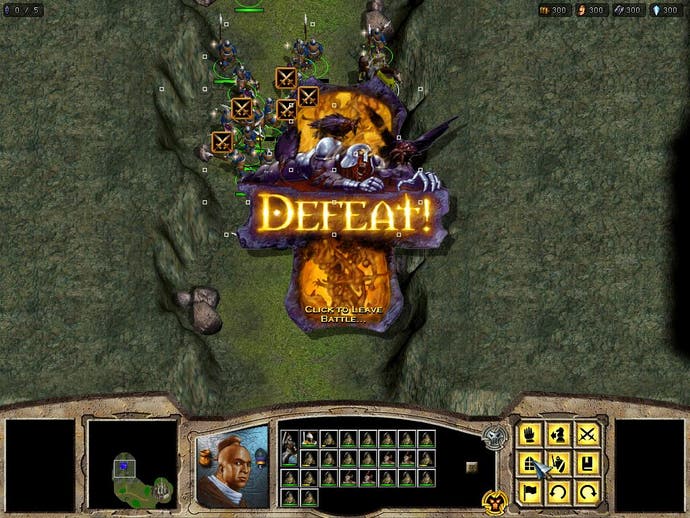
Conclusion
Despite these few flaws, Warlords Battlecry is a well constructed real-time strategy game. The sheer range of race and unit combinations combined with progressive hero character building makes the game highly compelling and varied. Multiplayer also works well, and has been given variety with a number of different mission types such as capture the flag or team based games.
Fans of earlier Warlords games might not take to this real time incarnation, and players tired of this genre won't find an awful lot new here. But if you have battled your way through Warcraft II and still lust for more real time swords and sorcery, then Warlords Battlecry will provide you with hours of quality entertainment. It may also be your last chance to play this kind of game in two dimensions...
